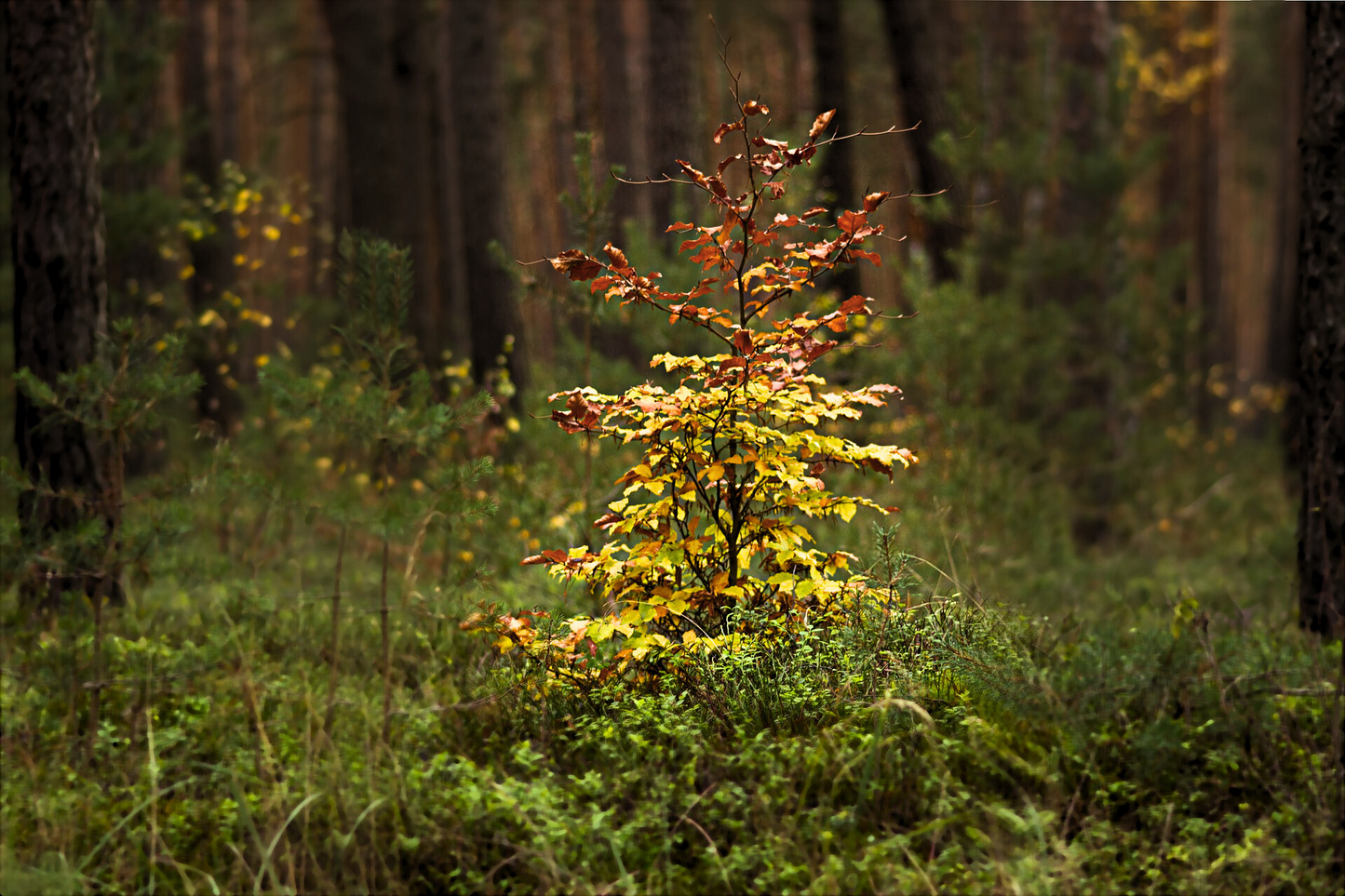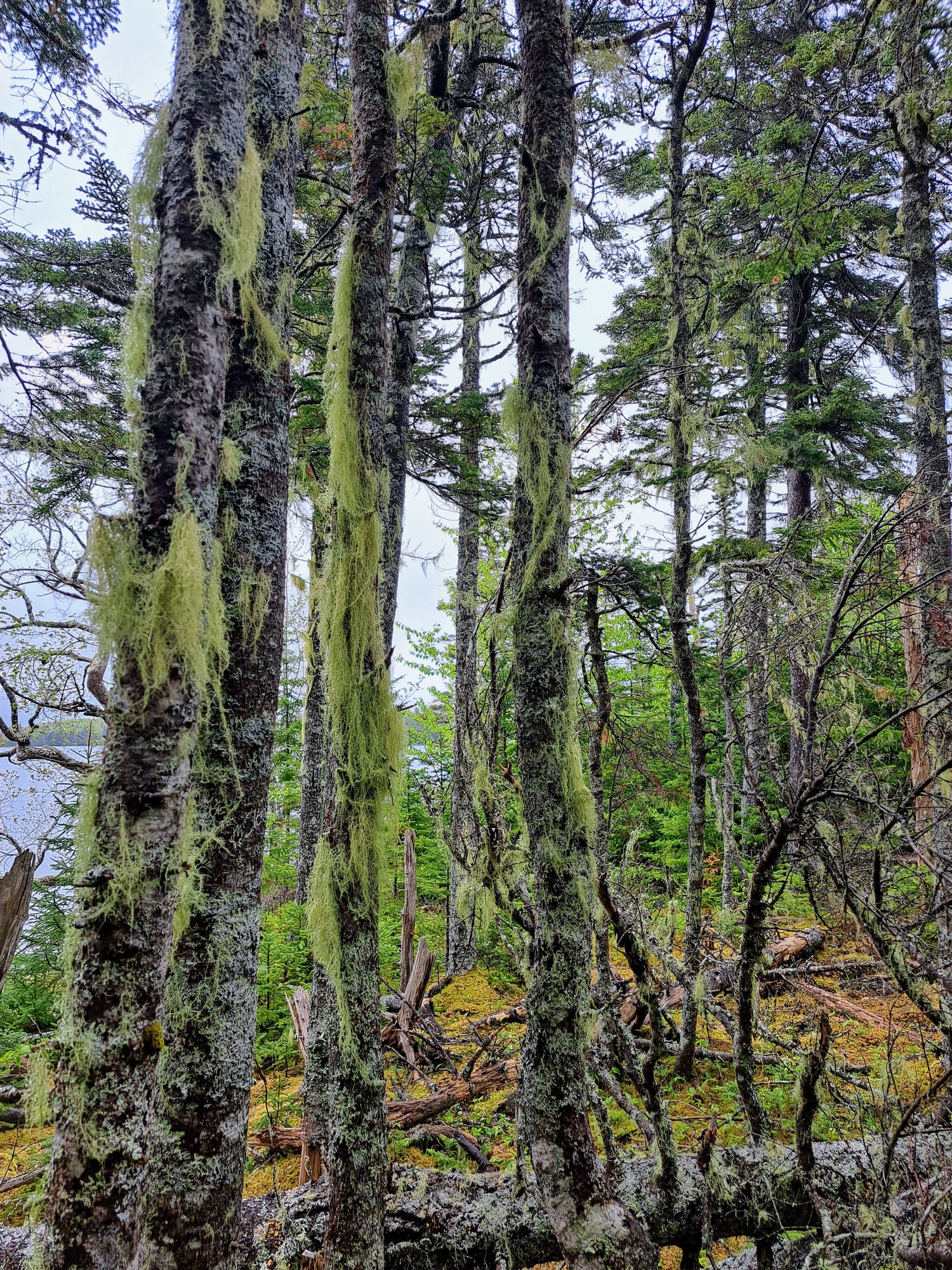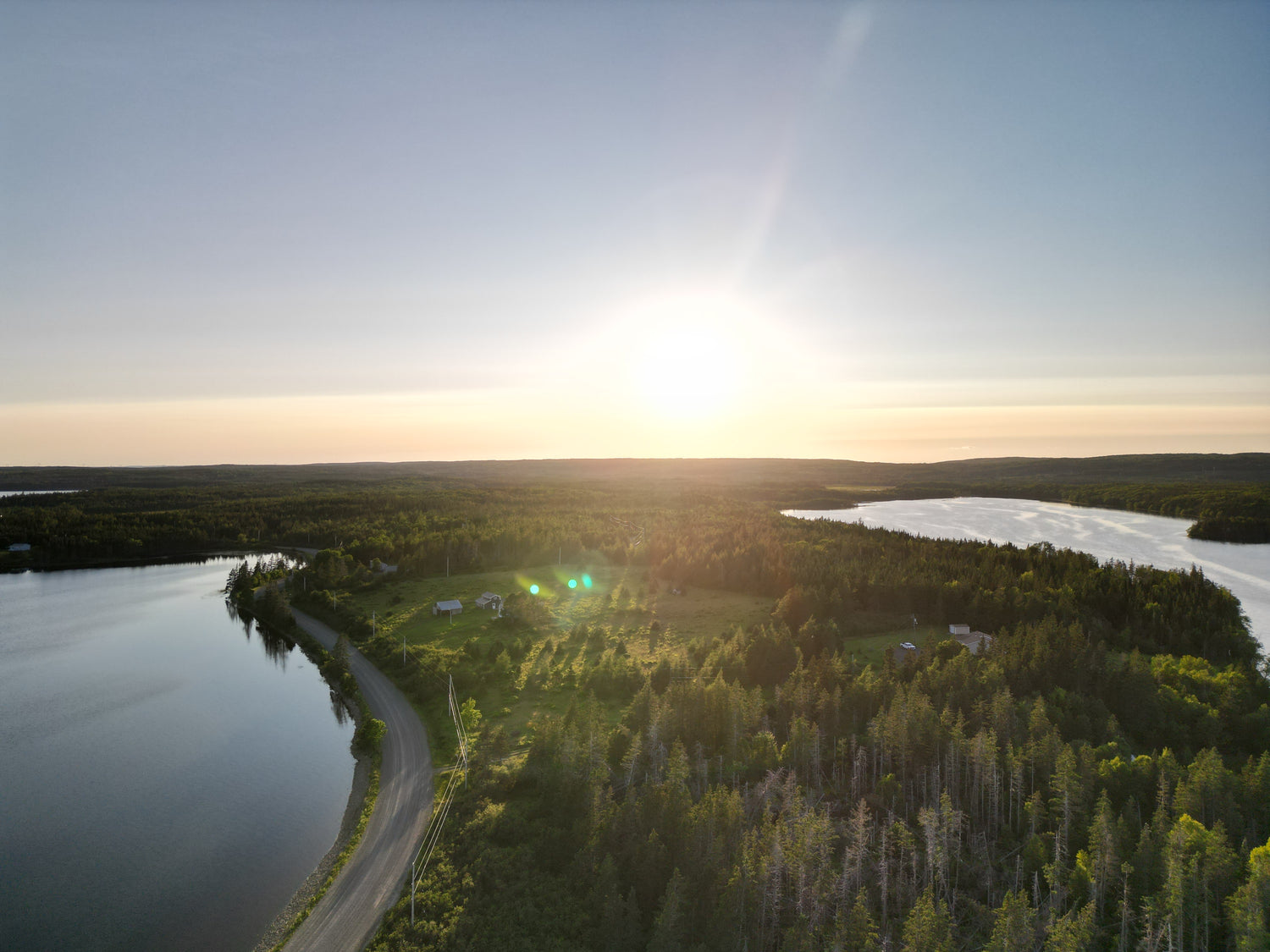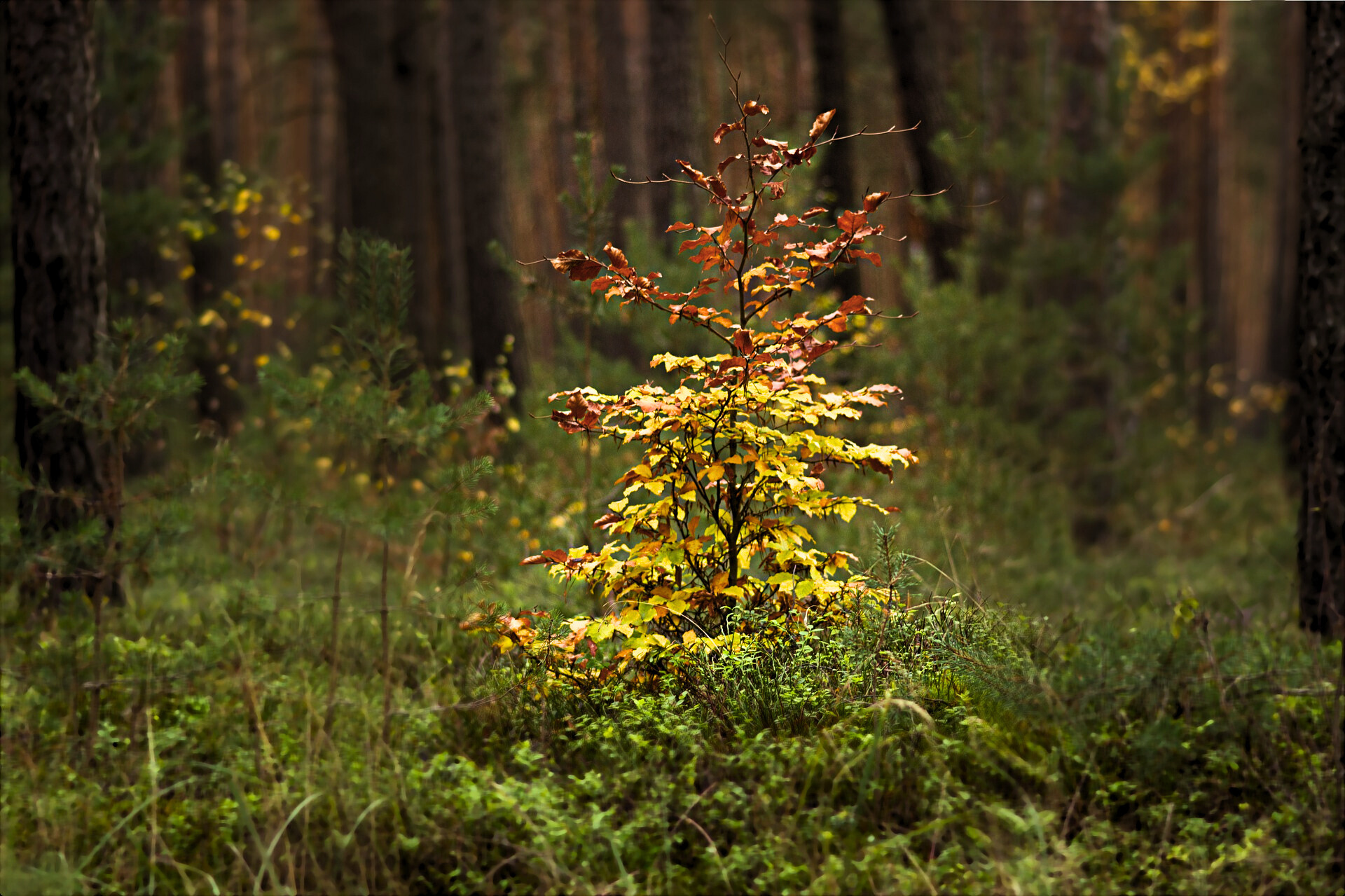The permanent forest
A success story spanning over a hundred years
Deciduous trees in Cape Breton Island and eastern Canada
1. Yellow Birch:
The yellow birch, scientifically known as Betula alleghaniensis, is a medium-sized deciduous tree native to North America. It is characterized by its distinctive yellowish bark, which fades to reddish-brown streaks with age. The wood of the yellow birch is strong, hard, and durable. It is used for various applications such as furniture, flooring, plywood, and cabin construction. The yellow birch also has ecological significance, providing habitat for many animal species and contributing to soil stabilization. Its leaves are used in some cultures to make natural remedies due to their anti-inflammatory and pain-relieving properties.
2. Sugar Maple:
The sugar maple, scientifically known as Acer saccharum, is a large deciduous tree widely cultivated in North America. It is known for its distinctive heart-shaped leaves and its valuable sap, which is used to make maple syrup. The wood of the sugar maple is hard, tough, and has a fine texture. It is used for furniture, flooring, cutting boards, and musical instruments. The sugar maple plays an important ecological role, providing habitat for a variety of animal species and helping to stabilize soil. In addition, its leaves have medicinal uses and are used in folk medicine to treat digestive ailments and promote liver health.
3. American Beech:
The American beech, scientifically known as Fagus grandifolia, is a large deciduous tree native to North America. It has smooth, gray bark and glossy green leaves. The wood of the American beech is hard, strong, and finely textured. It is used for furniture, flooring, cabinetry, and plywood. The American beech is ecologically important because it provides habitat for many animal species and contributes to soil fertility. Its nuts are an important food source for various wildlife. In natural medicine, the bark of the American beech is valued for its astringent and anti-inflammatory properties and is used to treat skin conditions.
4. Paper Birch:
The paper birch, scientifically known as Betula papyrifera, is a medium-sized deciduous tree found primarily in North America. It has striking white bark that peels back in papery strips, giving it the name "paper birch." Paper birch wood is light, strong, and smooth in texture. It is used for plywood, furniture, paneling, and wooden objects. The paper birch plays an ecological role by providing habitat for birds, insects, and mammals. Its sap is used by some indigenous peoples to make syrup and wine. Paper birch bark is used in traditional medicine to make tea, which has anti-inflammatory and fever-reducing properties.
5. White Birch (Silver Birch):
The silver birch, scientifically known as Betula pubescens, is a medium-sized deciduous tree native to North America and Europe. It has white-gray bark and triangular leaves. Silver birch wood is light, soft, and of lower quality than that of other birch species. Nevertheless, it is used for plywood, furniture, paneling, and wooden objects. The silver birch is ecologically important because it provides habitat for various animal species and contributes to soil stabilization. In folk medicine, the leaves and bark of the silver birch are used to make tea, which is used to treat urinary tract infections and to support the digestive system.
6. Trembling Aspen:
The quaking aspen, scientifically known as Populus tremuloides, is a medium-sized deciduous tree native to North America. It is characterized by its trembling leaves, which tremble in gentle breezes. The wood of the quaking aspen is light, soft, and of low durability. It is used for packaging, pallets, and pulp. The quaking aspen is ecologically important because it establishes pioneer vegetation on bare lands and contributes to the restoration of cleared or burned areas. In some indigenous cultures, the bark and resin of the quaking aspen are used to make ointments and lotions that are said to soothe skin irritations and pain.
7. Red Maple:
The red maple, scientifically known as Acer rubrum, is a medium to large deciduous tree native to North America. It is known for its distinctive red foliage in autumn. Red maple wood is hard, strong, and has an attractive grain. It is used for furniture, flooring, cutting boards, and musical instruments. The red maple is ecologically important because it provides habitat for birds, insects, and mammals. Its sap is also used to make maple syrup. In natural medicine, red maple leaves are used to make tea, which is used to promote cardiovascular health and lower cholesterol.
8. Black Cherry:
The black cherry, scientifically known as Prunus serotina, is a medium-sized deciduous tree native to North America. It has smooth, dark bark and glossy green leaves. Black cherry wood is hard, strong, and of high quality. It is used for furniture, interior design, and carpentry. The black cherry plays an important ecological role by providing habitat for birds and mammals and contributing to biodiversity. Black cherry fruits are edible and consumed by various animal species, including birds and mammals. In traditional medicine, black cherry bark and fruits are used to reduce inflammation and support the digestive system.
9. White Ash (American Ash):
The American ash, scientifically known as Fraxinus americana, is a large deciduous tree native to North America. It has gray bark and pinnate, dark green leaves. The wood of the American ash is hard, strong, and elastic. It is used for furniture, flooring, sports equipment, and carpentry. The American ash plays an important ecological role, providing habitat for birds, insects, and mammals. Its seeds are an important food source for birds and small mammals. The bark of the American ash is used in traditional medicine for its anti-inflammatory and pain-relieving properties.
10. American Elm (American Elm):
The American elm, scientifically known as Ulmus americana, is a large deciduous tree native to North America. It has a distinctive horizontally spreading crown and smooth, gray bark. The wood of the American elm is hard, strong, and of good quality. It was once widely used for furniture, ships, and wood paneling. The American elm played a significant role in urban landscapes before being affected by Dutch elm disease. The American elm is ecologically important because it provides habitat for birds, insects, and small mammals. In traditional medicine, parts of the American elm have been used to treat sore throats, skin conditions, and stomach upsets.
11. Red Oak:
The red oak, scientifically known as Quercus rubra, is a large deciduous tree native to North America. It has gray-brown bark and glossy, toothed leaves. Red oak wood is hard, strong, and of high quality. It is used for furniture, flooring, cabinetry, and wood paneling. The red oak is ecologically important because it provides habitat for a variety of animal species, including birds, squirrels, and wild boars. Its acorns serve as a food source for many wildlife species. In folk medicine, red oak bark extracts have been used to treat diarrhea, fever, and skin conditions.
12. White Oak:
The white oak, scientifically known as Quercus alba, is a large deciduous tree native to North America. It has gray to brown bark and toothed, glossy leaves. White oak wood is hard, strong, and durable. It is used for furniture, flooring, ships, and barrels. The white oak plays an important ecological role by providing habitat for birds, insects, and mammals. Its acorns are an important food source for many animal species. In traditional medicine, white oak bark and leaf extracts have been used to treat stomach upsets, fever, and skin infections.
13. Mountain Ash (American Rowan):
The American mountain ash, scientifically known as Sorbus americana, is a small deciduous tree native to North America. It has smooth gray bark and feathery green leaves. The wood of the American mountain ash is soft and not of great commercial importance. However, it plays an important ecological role, providing habitat for birds and helping to stabilize soils. The fruits of the American mountain ash are edible and are consumed by birds and other animals. In folk medicine, the fruits have been used to treat digestive disorders and boost the immune system.
14. Gray Birch:
The gray birch, scientifically known as Betula populifolia, is a medium-sized deciduous tree native to North America. It has white-gray bark that peels off in papery layers. The wood of the gray birch is light, soft, and of low quality. It is occasionally used for plywood and wooden pallets. The gray birch is ecologically important because it grows quickly and forms pioneer vegetation on bare areas. It provides habitat for various animal species and helps stabilize the soil. In traditional medicine, parts of the gray birch have been used to treat pain, fever, and skin conditions.
15. Speckled Alder (Grey Alder):
The grey alder, scientifically known as Alnus incana, is a medium-sized deciduous tree native to North America and Europe. It has gray bark and round, toothed leaves. Grey alder wood is soft, lightweight, and of limited commercial value. It is occasionally used for charcoal, fencing, and posts. The grey alder plays an important ecological role, helping to stabilize swampy areas and enrich the soil with nitrogen. It provides habitat for birds, insects, and other animal species. In traditional medicine, grey alder bark extracts have been used to treat skin conditions, rheumatism, and inflammation.
All of these deciduous trees contribute to both the economy and the environment. Their wood is used for a variety of applications, from furniture and flooring to cutting boards and musical instruments. They provide habitat for a variety of animal species, help stabilize soil, and improve air quality. Some of these trees also have healing properties and are used in traditional medicine to relieve various ailments. It is important to promote the sustainable use of these tree species to preserve their ecological importance and their benefits to humanity.
Bras d'Or
Permanent Forest Support
insert same text as on landing page


Hemlock fir
Eastern hemlock
The eastern hemlock, also known as Tsuga canadensis, is a medium-sized conifer native to North America. Eastern hemlock wood is lightweight, strong, and durable. It is used for structural lumber, interior furnishings, and paper products. The eastern hemlock is an important component of the forest ecosystem and provides habitat for various animal species. In traditional medicine, First Nations cultures use parts of the hemlock for their healing properties, such as treating colds and skin conditions.

The Norway spruce
The Norway spruce
The Norway spruce, scientifically known as Picea rubens, is a large evergreen tree native to North America. Its wood is of high quality and has a variety of uses. It is widely used for the construction of timber frames, furniture, plywood, and paper products. The wood is strong and has a beautiful reddish-brown color. Environmentally, the Norway spruce is an important component of the North American forest ecosystem. It provides habitat for many animal species and plays an important role in stabilizing soils and improving water quality.

Caption
Row
Pair text with an image to focus on your chosen product, collection, or blog post. Add details on availability, style, or even provide a review.

